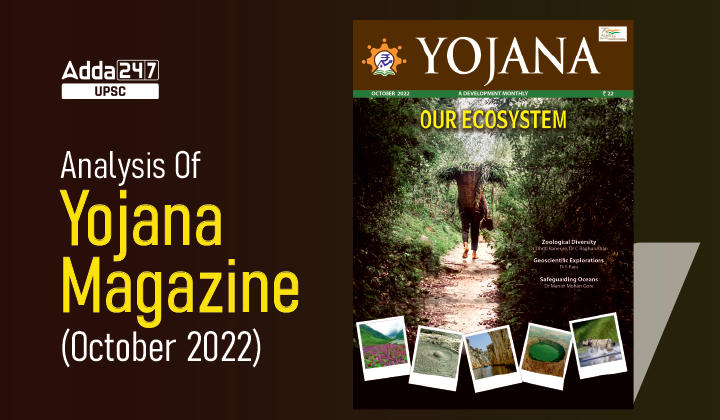Table of Contents
Introduction
- India is one of the mega-biodiversity countries in the world with unique biogeographical locations, diversified climatic conditions and wide array of ecosystems from deep sea to high mountain ranges at Himalayas.
- Occupying only 2 per cent of the World’s total landmass India harbours about 89,500 animal species comprising a little more than 7 per cent of the World’s known animal species.
- During the century, a variety of terrestrial and marine ecosystem areas, especially the diversity-rich areas in the forest ecosystems, grasslands, coastal plains (terrestrial ecosystem types), and varying coastal/ marine ecosystems, including coral-reef ecosystems have been explored in India.
Conditions due to which India is rich in biodiversity
- India is very rich in terms of biological diversity due to its unique biogeographic location, diversified climatic conditions and enormous ecodiversity and geodiversity.
- India embraces three major biological realms, viz., Indo-Malayan, Eurasian and Afro-tropical and is adorned with 10 biogeographic zones and 26 biotic provinces.
- This country possesses diversified ecosystems from snow clad high mountain ranges to sea coasts of all categories (sandy, muddy, rocky, shingle, coralline) including deserts and semi-arid regions, almost all “types”- of forests, grass lands, lakes, and rivers, estuaries, lagoons, islands and the ocean.
- The climate ranges from arctic in the Himalayas to very hot in the Thar Desert of Rajasthan while annual rainfall varies from 100 mm in the deserts to 5000 mm in the Cherrapunji hills.
- It is, therefore, quite inevitable that India having only 2 per cent of the total land mass of the world could harbour little over 6 per cent of the world’s known plant and animal species.
Biogeographic Zones and Biotic Provinces in India
| Sr. No. | Biogeographic Zone | Biotic Province |
| 1 | Trans-Himalayan | Upper Regivns |
| 2 | Himalayan | North-West Himalayas West Himalayas Central Himalayas East Himalayas |
| 3 | Desert | Kutch Thar Ladakh |
| 4 | Semi-Arid | Central India Gujarat-Rajwara |
| 5 | Western Ghats | Malabar Coast Western Ghat Mountains |
| 6 | Deccan Peninsula | Deccan Plateau South Central Plateau Eastern Plateau Chhota Nagpur Central Highlands |
| 7 | Gangetic Plain | Upper Gangetic Plain. Lower Gangetic Plain |
| 8 | North-East India | Brahmaputra Valley North-Eastern Hills |
| 9 | Islands | Andaman Islands Nicobar Islands Lakshadweep Islands |
| 10 | Coasts | West Coast East Coast |
Steps Taken by Government to Protect Wildlife and Its Habitats
The Government has taken several steps to protect wildlife and its habitats. Important steps taken in this regard include:
- The Wild Life (Protection) Act, 1972 provides for stringent punishment for violation of its provisions. The Act also provides for forfeiture of any equipment, vehicle or weapon that is used for committing wildlife offence(s). Rare and endangered species found in India, like Tiger, Snow Leopard, Great Indian Bustard, Gangetic Dolphin, Dugong, etc. have been listed in Schedule-I of the Wild Life (Protection) Act, 1972 thereby providing them highest degree of protection.
- Protected Areas, viz., National Parks, Sanctuaries, Conservation Reserves and Community Reserves have been created in the country covering important habitats to provide better protection to wildlife, including threatened species and their habitat.
- Financial assistance is provided to the State/Union Territory Governments under the Centrally Sponsored Scheme of ‘Integrated Development of Wildlife Habitats’, for better protection to wildlife and improvement of habitat.
- The local communities are involved in conservation measures through eco-development activities which help the forest departments in protection of wildlife.
- The Wild Life Crime Control Bureau (WCCB) coordinates with State/UTs and other enforcement agencies to gather intelligence about poaching and unlawful trade in wild animals and animal articles.
- Alerts and advisories were issued by WCCB on poaching and illegal trade of wildlife to the concerned State and Central agencies for preventive action.



 TSPSC Group 1 Question Paper 2024, Downl...
TSPSC Group 1 Question Paper 2024, Downl...
 TSPSC Group 1 Answer key 2024 Out, Downl...
TSPSC Group 1 Answer key 2024 Out, Downl...
 UPSC Prelims 2024 Question Paper, Downlo...
UPSC Prelims 2024 Question Paper, Downlo...




